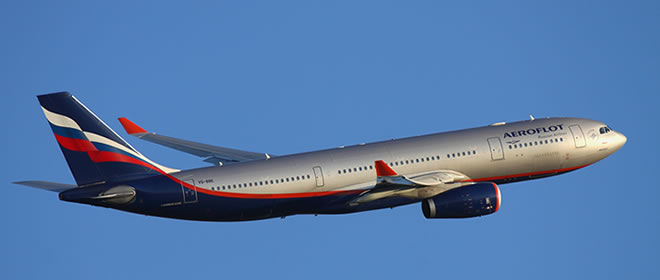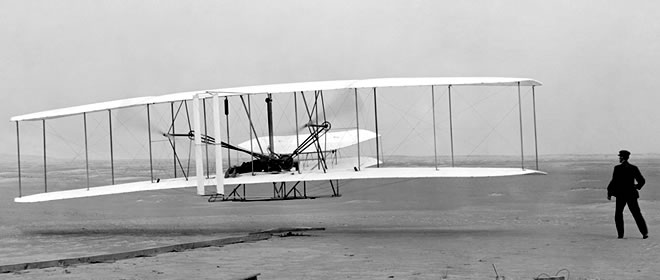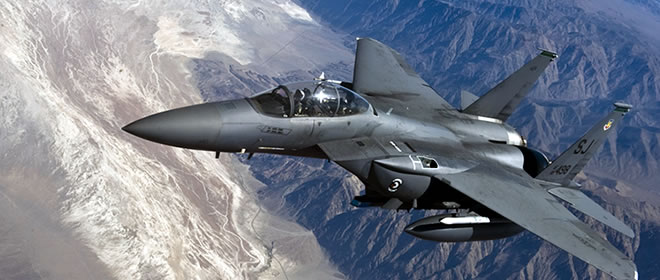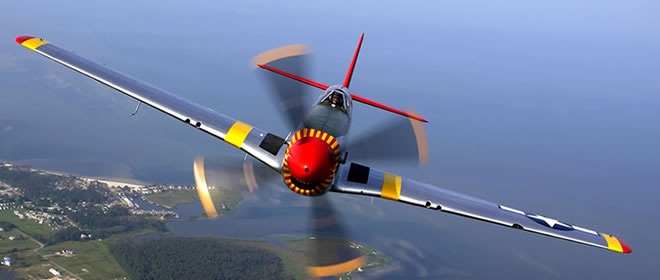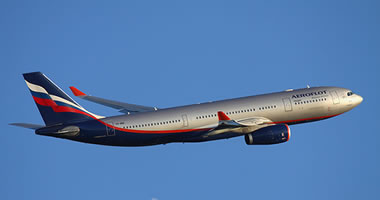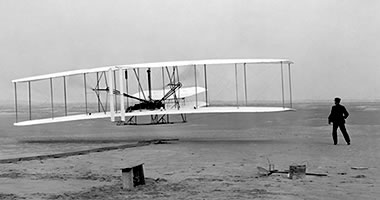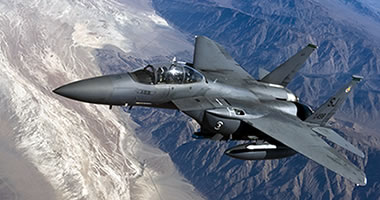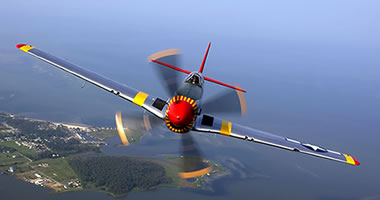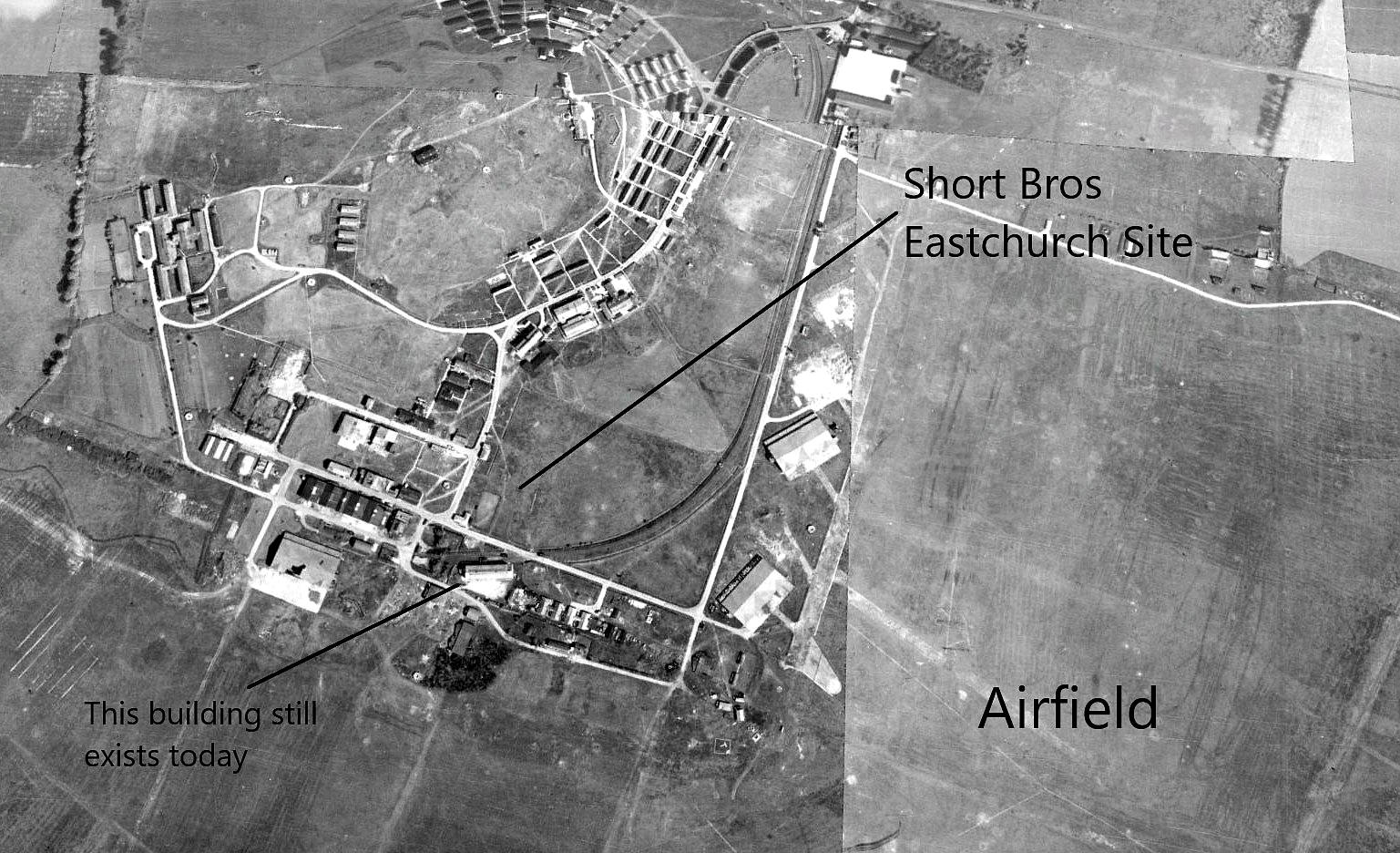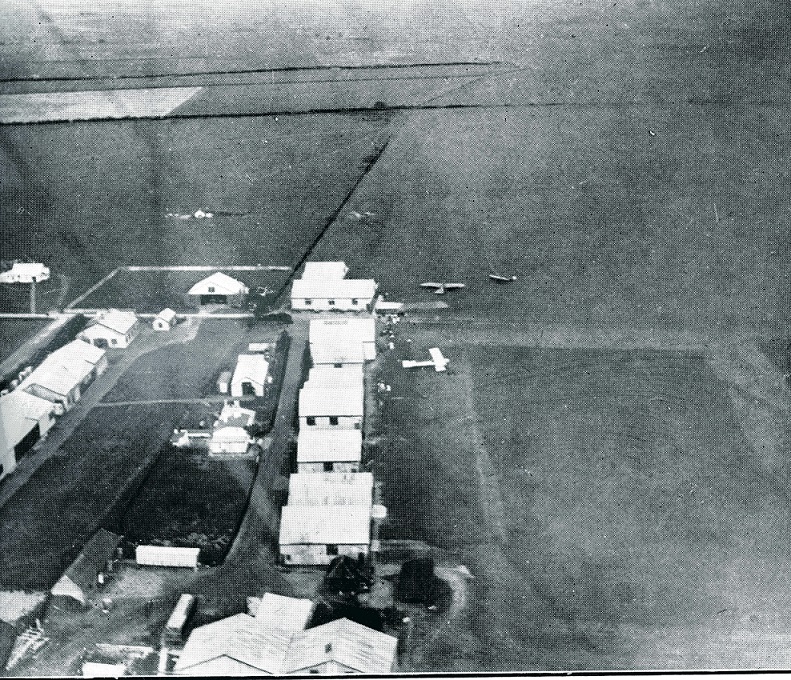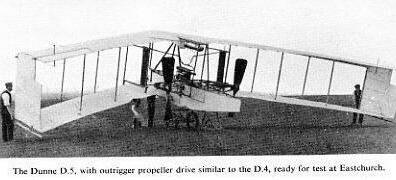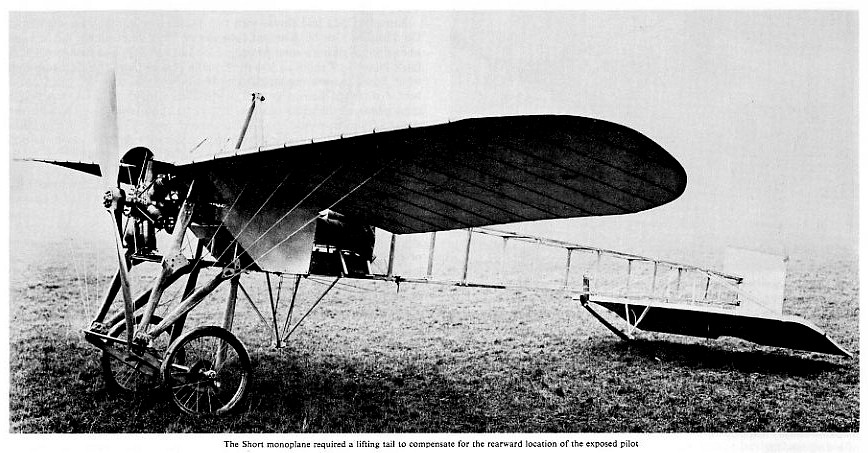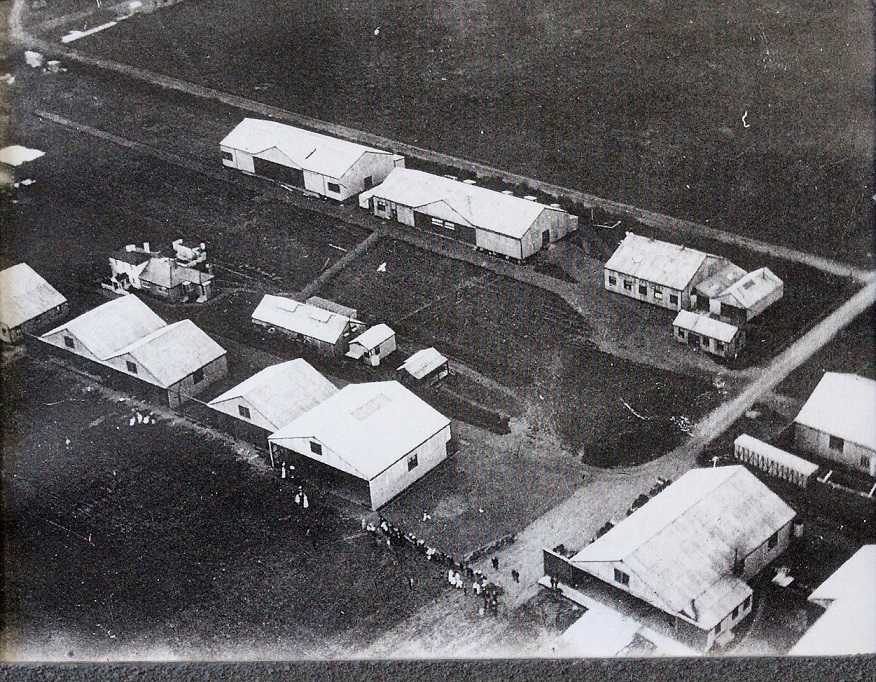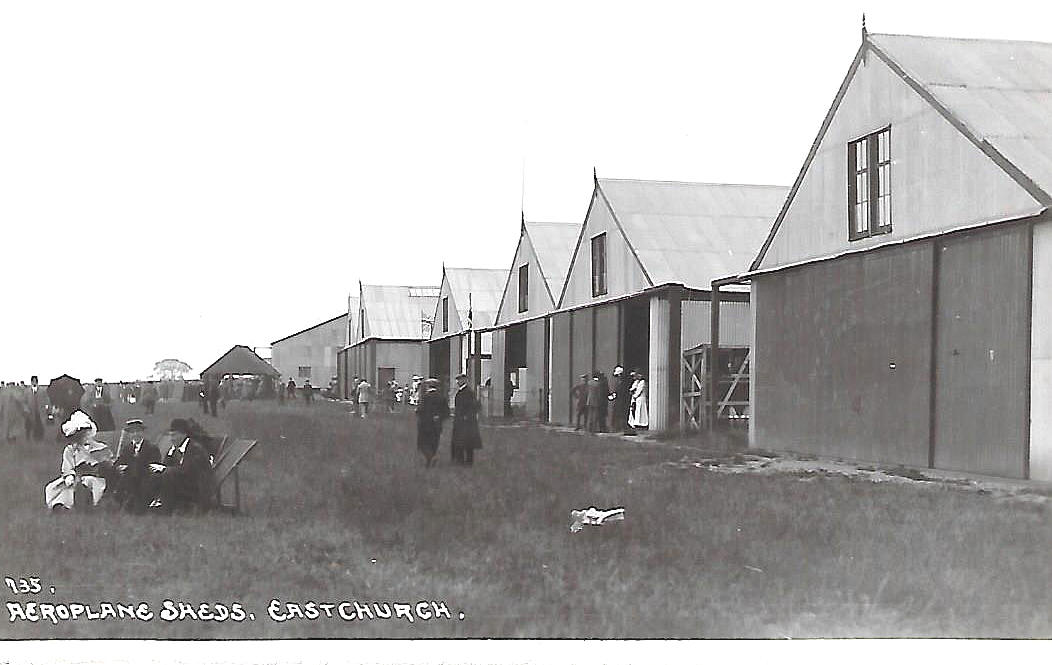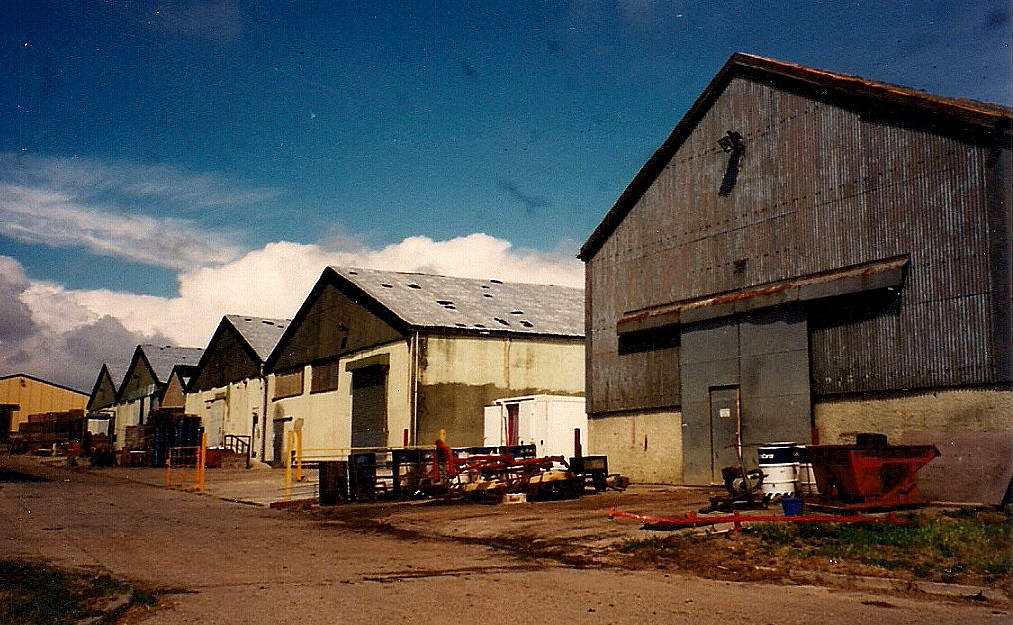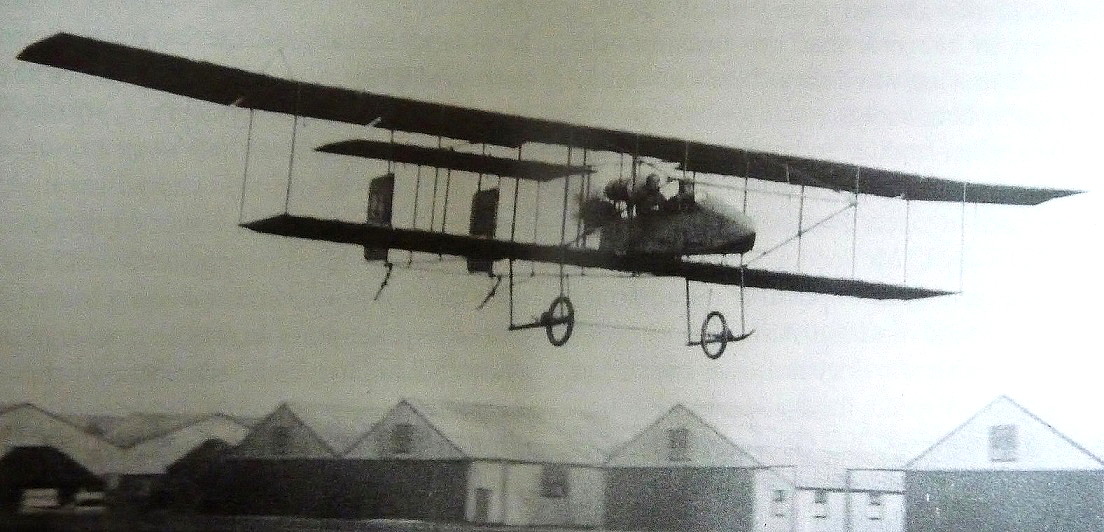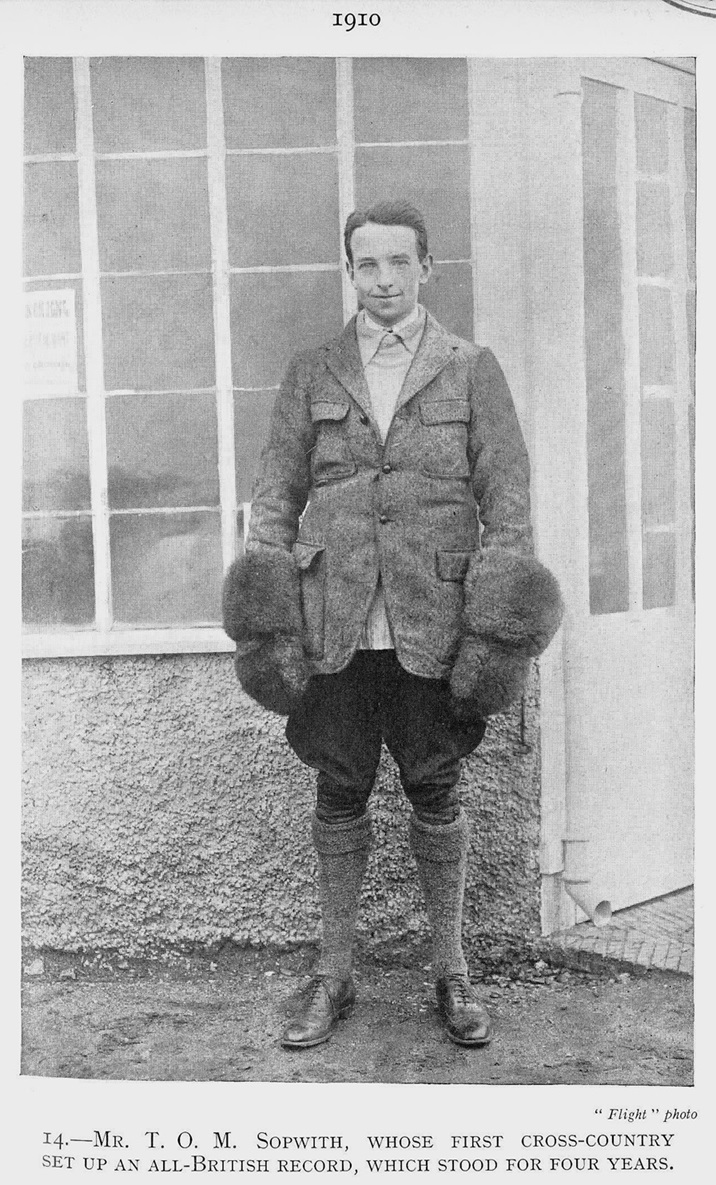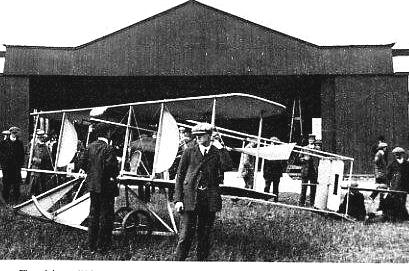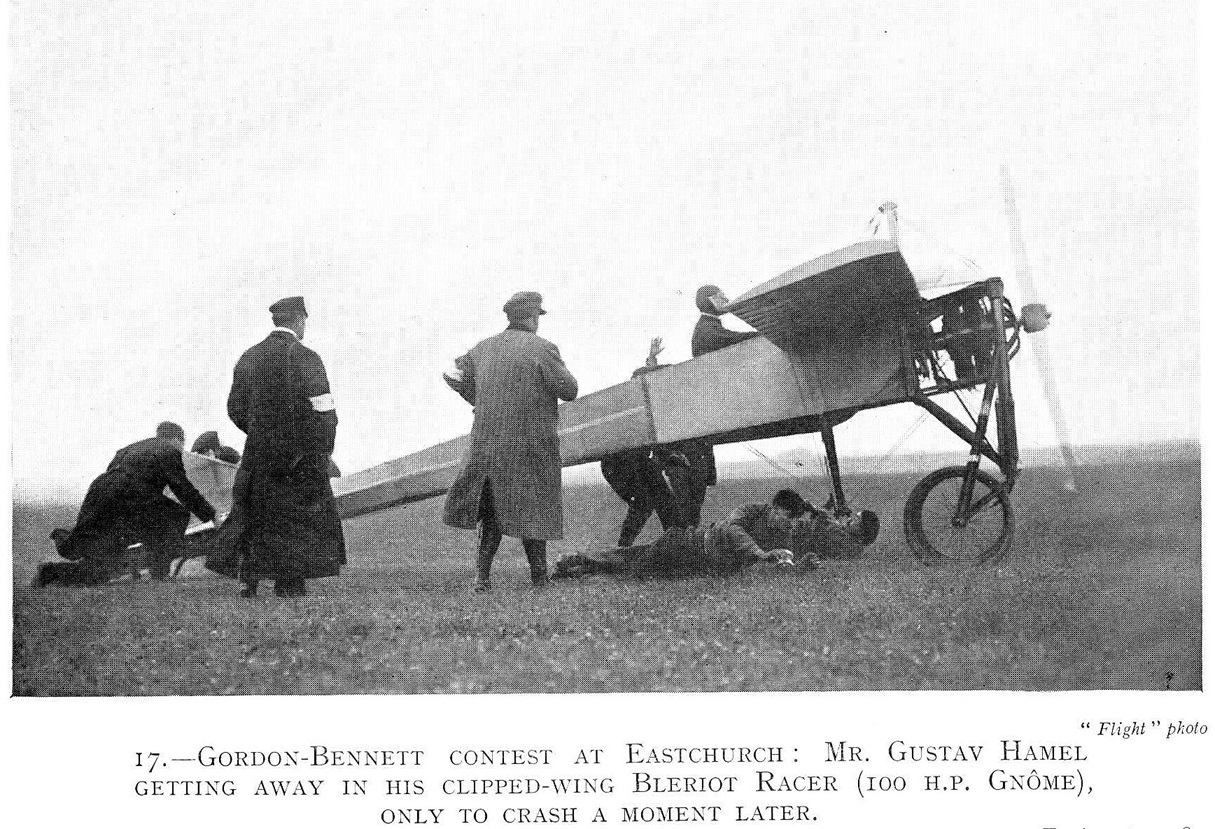Eastchurch
EASTCHURCH: Civil later military aerodrome in WW1, later civil aerodrome again until WW2 when it reverted to military aerodrome status
Note: The first three images were kindly provided by Mr Michael T Holder, the fourth picture was obtained from Google Earth ©
Note: The caption for the first picture reads: "Commander Sampson. Aviation School - Eastchurch. Lieut Longmore of HMS Actason leading at present with 208 miles and Capt Gerrard next , being only 10 miles behind - Mortimer Singer Prize." It appears the Mortimer Singer Prize was for £500 and eligible by Naval and Marine officers. But, the conditions of the competion are not stated. Does anybody now know?
Users: Late 1909 possibly, certainly in use by 1910. The site was apparently found by Eustace and Horace Short, (of Short Brothers fame), on a survey of the Isle of Sheppey when it became clear that SHELLBEACH was not really suitable. The 400 acre aerodrome site was purchased by Mr F McLean and it seems then leased back to the Aero Club for one shilling a year). The Aero Club later become the Royal Aero Club in February 1910, and Short Bros finished relocating their factory from LEYSDOWN to here in the spring of 1910.
This photo was scanned from The History of British Aviation, 1908 to 1914, by R Dallas Brett. We do not know where the picture was taken, but it serves to illustrate a major development by the Short brothers at EASTCHURCH. In 1910 they decided there was no future for trying to improve the Wright brothers design and construction, which of course was heavily flawed in most respects.
Instead they decided to adopt and adapt the principles of the French designers, Farman, Voisin and Sommer, and came up with a real winner. Taking one of these machines to France, Capt Dickson became the first British pilot, flying an adapted Henry Farman design, to hold a World Record, during the four day meeting at Anjou, securing two first prizes on the first day. On June the 6th, he broke the World Record by flying, with a passenger, for exactly two hours.
Indeed, it now appears that this Short brothers version was very easy to fly, unlike the American Wright brothers design which was, to be polite, a pig at best. To illustrate this it appears that a Mr Colmore, flew one for eleven miles on his first attempt at solo flight here. No dual instruction in those days, apparently having some twenty minutes taxying practice beforehand.
SOMETHING OF INTEREST
Note: First picture: In his usually excellent book Flying and Ballooning - from old photographs, John Fabb has this picture captioned: "The Etrich monoplane at Eastchurch, the naval aviation ground on the Isle of Sheppey, December 1912. The pilot was Lieutenant Reginald Gregory, R.N."
The second, third pictures and fourth pictures were scanned from, British Aviation - The Pioneer Years, by Harald Penrose, first published in 1967. The third picture shows the two models on offer, the S.27 for solo flight and the 'School' twin-seater S.34. It seems to me that both these aircraft were still highly influenced by the Wright brothers design.
COMMENTS
This first picture is I think of especial interest. The Taube ('Dove' in English) was designed by Igo Taube in Austria-Hungary and first flew in 1910. A multi-purpose design it soon became very successful and was produced by several manufacturers - and indeed became the first mass-produced military aeroplane, especially in Germany. When for example, it was known as the Rumpler Taube and many other names.
I cannot find any reference to the RNAS (Royal Naval Air Service) operating a Taube, but it does appear the RFC (Royal Flying Corps) had at least one in 1912.
The second picture of the Dunne D.5 was yet another attempt by Capt. John Dunne to design a completely stable aeroplane, and eventually he did succeed. However, it was soon realised that such a design was totally undesirable for military use, when manouevrabilty was the key to survival in aerial combat.
Regarding the third picture I am a bit reluctant to be even a bit of an expert. Without any doubt, this picture scanned from his most excellent book, British Aviation - The Pioneer Years, shows the Short 'Triple-Twin', so called because the front engine powered two propellers, but the rear engine just one. But here is the question - was this the first twin-engine aircraft built in the UK? I think it probably was.
This picture was also scanned from British Aviation - The Pioneer Years by Harald Penrose. To my untutored eye it seems to owe rather a lot to the Blériot monoplane designs of this era.
A SMALL SELECTION OF PICTURES FROM THE EASTCHURCH AVIATION MUSEUM
First and Second pictures: I think these pictures are of great interest. Frank McClean was a great proponent of advancing aviation, especially for use by the Royal Navy. But, I cannot think of any other example of an individual allowing an aerodrome developing around their house!
Third picture: Again very interesting in many respects. This was the first aircraft built by the Short brothers for Frank McClean. The most notable absence in the design being a vertical fin and rudder.
NOTES: It is always such a joy in compiling this 'Guide' to discover a quirky aspect of our aviation history. I found this in the excellent book British Aviation - The Pioneer Years, by Harald Penrose first published in 1967. It concerns the first aeroplane built by Sopwith at his factory, (an ex-ice rink), in Kingston-upon-Thames and called the Hybrid. In fact it was a rebuild of the type first constructed at BROOKLANDS (SURREY). Hence the name I suppose.
"Its new form attracted the attention of Commander Oliver Schwann, who had changed his name to Swann because of increasing hostility towards anything that sounded German. Through him it was sold to the Admiralty. Tom Sopwith recorded: 'I asked Oliver Swann, who was second in command to Murray Sueter, then head man at the Admiralty, if I could have the money quickly to pay the wages bill for this was our first sale, and we had not much in the kitty. So Swann, a man of means, very sportingly promised to pay the £900 odd from his own account if there was any delay, and subsequently get it back from My Lords of the Admiralty'."
"But in fact they paid up quickly, so there was no need for his generosity. In due course the tractor was taken to Eastchurch." Perhaps I should explain to younger readers that in those days aeroplanes were basically divided into two types depending on where the engine and propellor were positioned. If in front of the pilot it was a 'tractor' type, if behind it was a 'pusher' type.
FLYING SCHOOLS
It is often claimed that The British & Colonial Aeroplane Company based at FILTON in (GLOUCESTERSHIRE) also formed one of their “Bristol Flying Schools” here as well as at BROOKLANDS in SURREY, LARK HILL in WILTSHIRE plus FILTON of course. It now appears, having some twenty years researching the subject, that this is utter nonsense. As is so much of the history you might read about.
In his excellent book, British Aviation - The Pioneer Years, first published in 1967, Harald Penrose offers us another insight regarding the situation in 1912: "Since the beginning of the year the Naval Flying School at Eastchurch had been under the command of Capt. Godrey Payne, R.N., previously of H.M.S. Actaeon, the torpedo ship at Sheerness which nominally bore the pilots under training. In mid-April Payne was summonded to the Admiralty, and informed by the First Lord, Mr. Winston Churchill, that he must secure his brevet by May 1st, as he had been selected as the initial Commandant of the new Central Flying School." This was at UPAVON in WILTSHIRE of course.
"No choice could have been better for a combined Services operation, for Payne was a man of resolute, even intimidating character, and a tremendous organiser and disciplinarian. Returning to Eastchurch, he gruffly informed Lieut. Longmore it was his job to see that the flying certificate was secured. Within ten days it was accomplished." This is I think, of considerable interest as, from most sources the impression is that UPAVON when formed was primarily a RFC establishment dominated by the Army.
Military users: Pre 1914: RNAS No.1 & No.4 flying school. A Naval Flying School was established in February 1911, (privately financed), and this developed into a RNAS Flying School and later a RFC Home Defence Station was also formed here
1918. The RAF also used this site as a Training Depot Station and Flying School
1919 to 1939:
33 Sqdn (Hawker Harts)
No.1 Air Armament School
Note: In September 2017 I was contacted by Mike Charlton who has an amazing collection of British aviation postcards. See, www.aviationpostcard.co.uk
He has sent me three pictures from postcards of EASTCHURCH. When was the first picture taken? If anybody can kindly offer advice, this will be most welcome. One does I suppose have to wonder; who exactly would want to purchase such a postcard? Possibly aimed just at people based here?
The second picture is a lovely scene, with visitors casually spread around in 1912.
I cannot identify the monoplane seen in the third picture. Can anybody kindly offer advice? In September 2020 I was kindly contacted by Mr David Hill and he believes this aircraft was most probably a Nieuport II. In November 2020 I was contacted by Mr Matthew Clements and he also thinks it is a Nieuport II.
WW2: RAF Bomber Command
12 & 142 Sqdns (Fairey Battles)
1940: RAF Coastal Command (Bristol Blenheims)
266 Sqdn (Vickers-Supermarine Spitfires)
Flying Training Command 54 Group A
Aircrew Re-selection Centre
POST WW2
1948: RN Air Section (Operated by Short Bros & Harland, Rochester Aerodrome as a Admiralty Flight and Instrument Flying School)
Aero Club: Pre 1940: Seven Aero Club
Manufacturing: Short brothers
Location: On the Isle of Sheppey about 5nm ESE of Sheerness. The original flying was done at MUSWELL MANOR (SHELLBEACH) before the short move to the then brand new EASTCHURCH aerodrome
Period of operation: 1909/10 to 1947/8. Some say it closed in 1946
Landing area: Originally ‘all-over’ grass airfield of about 400 acres but at the start of WW1 a smaller area of about 350 acres was in use initially it seems. Later in WW1 the site was expanded to 600 acres 1829 x 1463
Runways: WW2: SE/NW 1463 grass N/S 1097 grass
E/W 1097 grass
Note: Picture from Alan Faupel. Incredibly perhaps, the original Harbro Aviation Sheds, (hangars were then called 'sheds'), still exist and are within the confines of the Stamford Hill Open Prison. These days used for agricultural purposes although it appears a preservation order may be imposed. A visit to the Eastchurch Aviation Museum in 2018 confirmed that the Royal Naval shed at least, had been awarded Grade Two preservation status. This being the oldest aviation related building in the entire world!
NOTES: In many respects Short Bros can legitimately claim to be the first aircraft British aircraft manufacturer because they built aircraft to order originally in their BATTERSEA workshops on a small scale. In 1909 their LEYSDOWN factory won a contract to build six Short-Wright Flyers for several customers including the Aero Club which was then based at LEYSDOWN/SHELLBEACH. It appears that Short Bros established a facrory at nearby LEYSDOWN, When the decision was to move to EASTCHURCH the Short Brothers followed, moving their factory here.
A CLAIM TO FAME?
In his book ‘Old Flying Days’ Major C C Turner, (who was also the editor of Aeronautics magazine), makes a very convincing argument that EASTCHURCH was in some ways looking back, far more important to the advancement of British aviation than BROOKLANDS or even FARNBOROUGH and HENDON. After all, he was there and personally acquainted with all the great names of the time. The following paragraph seems well worth repeating in full:
“In one respect EASTCHURCH (my capitals) became a more important centre of aviation than BROOKLANDS or HENDON. From the first it enjoyed the favour of wealthy experimenters, and it soon became a home of an aeroplane industry. BROOKLANDS was rather the resort of the amateur designer, or at any rate the designer who laboured under the disadvantage of poverty. (My comment: Such as A V Roe of course). HENDON was chiefly the home of flying sport. (My comment: Such as Claude Grahame-White etc).
ANOTHER ASPECT OF EASTCHURCH
EASTCHURCH not only possessed the advantages already mentioned, it was particularly fortunate in the fact that Horace Short worked there. It was largely due to his influence it appears, that at EASTCHURCH aeronautical technology was built up, and, from EASTCHURCH the Accidents Investigation Committee of the Royal Aero Club was chiefly constituted. Even subsequent to the establishment of the Royal Aircraft Factory at FARNBOROUGH that Committee proved more than once to be the soundest technical authority in this country, and one has only to refer to its reports on certain accidents to discover that it was at times able to instruct FARNBOROUGH. All this was largely due to Horace Short, who undoubtedly was a genius.
A memorial to the Short Brothers has been erected near to the original SHELLBEACH site. See my article on Musuems, gate-guardians and memorials.
THE FOUNDINGS OF THE ROYAL NAVAL AIR SERVICE
From February 1911 the Royal Aero Club offered free instruction to naval officers and therefore the foundings of the RNAS (Royal Naval Air Service) can be traced back to this location. It appears the first officer to qualify was Lieut. C R Samson on the 24th April 1911.
DAVID HILL GALLERY
In September 2020 Mr David Hill very kindly sent me these pictures and, perhaps needless to say, a picture of the Jezzi monoplane was a real find. I had never seen a picture of this aeroplane before. The third picture of the Short S.38 also has a story attached. It appears this picture was taken in 1912, but on November 1913 it is reported that Lt. Wildman-Lushington took Winston Churchill for a flight, and, let him have a go at the controls. Churchill had had an interest in aviation matters almost from the start and this continued after he became First Lord of the Admiralty during WW1. However, he was persuaded to stop flying as it was deemed far too risky for somebody in such a high position of authority.
LEO JEZZI
The accounts by C C Turner of Mr Leo Jezzi I found quite astonishing. Why is it that the names of Moore-Brabazon, C S Rolls etc, in connection with EASTCHURCH are still remembered but Jezzi isn’t? For example, “ Mr Leo Jezzi’s work calls for more than a passing reference. There was a good deal of truth in the remark once made of him to the effect that he arrived at EASTCHURCH with ‘a bundle of calico under one arm and an old packing case under the other, and an old motor-bicycle engine of his back, and in a few months he had built a machine that was flying around the aerodrome, and got his ticket!”
Space and time prohibits me from a making a full account but should you read it if you can find a copy of this book. I trust you’ll agree that just possibly, and much more than most of the early pioneers, Mr Jezzi should probably be now hailed as the founding father of the home-built aircraft tradition in the UK at least? For a start, “Mr. Jezzi’s daily work lay in the City, and he did his aeronautical experiments in his spare time.” With the assistance of an old school friend he, “found many difficulties in designing and building the machine, and had to learn to use their tools as they got on with its construction. They wasted many hours by faulty workmanship, but by brute force completed the task. They made mistakes in construction and design, but the machine flew. ”
“Opportunties for learning to fly were limited to calm weather when it occurred at week-ends, and it was not till August 10, 1910, that Mr. Jezzi got a really good flight. His chief trouble at first was due to trying to discover whether erratic movements in flight were due to the machine or to his erratic piloting. His first ‘flight’ or ‘hop’ was only about 250 yards at about 6ft above the ground. Landing was easy, and in hundreds of landings (probably 900 to 1,000) only one wheel and skid were broken.” This appears to be a most remarkable achievement in those days.
“Towards the end of 1911 Mr. Jezzi started building a small tractor biplane at Bromley, and early in 1912 he assembled it at EASTCHURCH. This was driven by the same J.A.P. engine. With this he reached a speed of 65 miles per hour.” The account then goes on to say, “When he started operations at EASTCHURCH in January, 1910, the only others there were the late Cecil Grace, the late J. L. Travers, Captain Dunne, the late Hon. C. S. Rolls, and Professor Huntington”.
Here again some more history needs to be learned? “Later on Mr. Moore-Brabazon and the Hon. Maurice Egerton had their machines and sheds moved from LEYSDOWN to EASTCHURCH, and they were joined by Mr F McClean and Mr. Alec Ogilvie, Mr. A. E. George, Major H. C. Brocklehurst, and some Naval Officers who were being taught flying. Mr. (now Major) G. C. Colmore flew a Short biplane.”
“A great many friends came to EASTCHURCH at week-ends, and sometimes there were five sleeping in one of the sheds. Mr Jezzi gave hundreds of passenger flights on the tractor biplane, and a number of men who afterwards became pilots had their first flight on this machine”.
THE T.O.M. SOPWITH ERA
This photo of 'Tommy' Sopwith was scanned from The History of British Aviation, 1908 to 1914, by R Dallas Brett. Check out the gloves, (mittens?), and wonder about how an aeroplane can be flown wearing these! I do not know where this photo was actually taken, but, presumably here?
On the 18th December 1910 Mr T. O. M. Sopwith, (Yes! That Sopwith of Pup and Camel fame in WW1), took off to attempt a claim for the Baron de Forest prize of £4000 for the longest flight from England to the Continent in a Howard Wright biplane fitted with an E.N.V. engine. Up to this point the engine had never run satisfactorily for more than ten or twelve minutes but Mr F Sigrist (who later became a partner with Sopwith in the Hawker Engineering Company), had locked himself away for several hours with the engine determined to sort it out.
He did too and ‘Tommy’ Sopwith flew for three and a half hours reaching Thirlemont in Belgium, (C C Turner says he landed at Beaumont near Hainault), a distance of 177½ miles. This was just a year and a half after Blériot had first flown across the Channel! As C C Turner points out, Sopwith “was all but a novice” when attempting this flight. Indeed, when Sopwith made an attempt on the Michelin Cup, a closed-circuit endurance race, (which he didn't win flying for 3 hours 3 minutes), not long before embarking on this adventure, he had logged just ten hours.
A BIT MORE DETAIL
In his excellent book British Aviation - The Pioneer Years, first publish in 1967, Harald Penrose fills out the story: "Fred Sigrist had insisted that the mostly likely time for an engine to fail was in the first few minutes of full throttle, so the Howard Wright biplane was next taken by road from Brooklands to Eastchurch so that Sopwith could have half an hour's flying overland before attempting the Channel for the de Forest prize. Gales ensued for some days, but the early morning of December 18th dawned calm. They got out the aeroplane and at eight-thirty Tom Sopwith took-off, climbing to 1,000ft, with a feeling of constant apprehension that the engine might change its note and begin to fail. Dover was duly reached in half an hour."
The next is from Sopwith himself: 'Twenty-two minutes later,' he recorded, 'I crossed the French coast, exactly where I have never discovered to this day, but I was very relieved to see it. My compass persisted in pointing N.W. no matter how I turned; so I steered by the sun but soon it was hidden by clouds so I continued to fly straight ahead as best I could, passing south of Lille where it was bumpy. Soon I crossed the Belgian frontier and it got so rough I was nearly thrown out, but hung on with one hand under the seat. We had no seat belts in those days; nor did we have such luxuries as an air speed indicator. The wind was rising and hilly country lay ahead, so I decided to land at the first favourable spot - a field near Beaumont. I was getting frightened!'.
Sopwith’s achievement is all the remarkable because of the competition. Cecil Grace was also poised to go from EASTCHURCH and Claude Grahame-White, Robert Lorraine plus C H Cresswell were encamped on SWINGATE DOWNS near Dover. Along the coast at SHORNCLIFFE Army Camp Lt Watkins was making preperations and S F Cody had announced his intention to depart from FARNBOROUGH.
THE FIRST AIRCRAFT WITH TWO ENGINES?
C C Turner also claims that in 1910 Short Bros built the ‘Triple Twin’ – a design with two engines, (the first twin engined aircraft in the world?), one engine driving two tractor propellers, the second engine driving a pusher.
A WORLD RECORD
On the 1st July 1911 the American pilot Charles Weymann broke the world speed record here in a Nieuport aircraft at 79.5mph, (some records state 78.77mph which I believe is correct?), during the Gordon Bennett International Trophy or ‘Air Race’ meeting. From then on it seems it was many years before another British aircraft set the speed record flying from a British location. Probably from CALSHOT in the 1930s in the Schneider races? British aircraft did however set the air speed world record when competing abroad in between these dates. The Sopwith Tabloid in Monaco competing in the second Schneider race in April 1914 for example when Harold ‘Picky’ Pickton attained an average speed of 86.8mph. He did then fly two more circuits at 92mph.
Regarding the 1911 choice of EASTCHURCH as a venue C C Turner said, “From the popular point of view a less convenient locality for so important an event could scarcely have been chosen. However, all the aeronautical world assembled.”
In his excellent book British Aviation - The Pioneer Years, first published in 1967, Harald Penrose, provides additonal information: "Procedure was for each competitor in turn to be timed around the five-lap course. Teams were entered by the U.S.A., France and Great Britain flying a mixed selection of non-British aircraft. Thus the home team's Gustav Hamel had a special racing Blériot with minuscle wings of 17ft span and 3½ ft. chord, powered by integrated twin Gomes giving 100 h.p.: Ogilvie used a miniature Wright biplane from the U.S.A. powered with a British N.E.C. two-stroke."
"Prier had been entered by the British branch of Blériot to fly one their French-built monoplanes, but tactfully withdrew to join the British & Colonial company at Bristol where a monoplane of his design, powered by a Gnome, was being constructed and the mercurial Graham Gillmore designated to fly it in the contest - but, not unexpectedly, the machine was not ready in time."
Note: The first picture was scanned from British Aviation - The Pioneer Years. The picture of Hamel was scanned from The History of British Aviation, 1908 to 1914, by R Dallas Brett.
"First away was Hamel. Knowledgeable spectators watched with fearful anticipation - and they were right! After a long, disquieting take-off he stalled at the first turn and slanted into the ground with a terrific smash, the aeroplane a heap of twisted wreckage - yet he crawled out almost unhurt. That left Olgilvie who achieved 51.3 m.p.h. with the little Wright, contending with two Nieuports and another Blériot entered by France; but it was a third Nieuport entered by the U.S.A., flown by their Charles Weymann, which won at 78 m.p.h."
"Yet though the British had been thoroughly beaten, the Royal Aero Club seemed smugly satisfied because they had managed to organise a great international event for what was regarded as the Blue Riband of Aviation."
THE NAVAL FLYING SCHOOL
It is also claimed that ‘officially’ the formation of the Naval Flying School was established here in December 1911, and, it appears that the Royal Naval Air Service was formed here in 1912. At the outbreak of the First World War the Royal Aero Club continued to offer to train pilots here for the Royal Navy free of charge!
PICTURES FROM 1912
Note: Scanned from British Aviation - The Pioneer Years, I think these two pictures are worth adding to this 'Guide'.
The caption for the first picture is: "Derived from the Triple Tandem but based on the S.51, the S.47 with tandem Gnomes was tested by Frank McClean on 24th July, 1912."
The caption for the second picture is: "The Tandem Twin, though of less drag than the Triple Twin, suffered from inefficiency of the rear propeller working in the slipstream of the front propeller." Clearly, this problem was later solved - probably much later. Was the Cessna 337 Skymaster the last aircraft produced by a major manufacturer to employ this method of propulsion?
SHORT BROS AIRCRAFT
In his usually excellent and most informative book British Built Aircraft Vol.3 Ron Smith provides a list of the Short aircraft built here but I find the ‘designations’ confusing. Did for example “S.26” supplied to F K McClean refer to a identification number, possibly painted on part of the airframe? (later to become the letter based registration on civil aircraft and serial numbers on military types, who pretty soon adopted the letter plus number system due to the huge numbers involved in WW1), or was it a modified S.27 Type? I think the latter is probably the correct answer?
Type Serial No 1st flight Notes
Type S.26? S.26 ? As noted F K McClean had S.26, Cecil Grace S.27 and S.29, Moore-Brabazon had S.28 which was later modified, see note below. S.26, S.28 and S.34 were used for training RNAS Officers.
Improved S.27 S.35? 09.03.11 Built for Maurice Egerton.
Improved S.27 S.38? 24.05.11 After further development became the S.38 Type, see below.
S.32 Type S.32? 29.07.11 The S.32 was built for F K McClean.
S.39 Triple Twin ? 18.09.11 The front engine drove two ‘tractor’ propellers and the rear engine a ‘pusher’
S.27 Tandem Twin ? 29.10.11 A push-pull propeller arrangement.
M.2 ? 24.02.12 A monoplane similar to a Blériot.
S.33 Type S.33? May 1912 Floatplane variant of the S.32 Type first flown from HARTY FERRY
S.47 Triple Tractor ? 24.07.12 This ‘machine’ featured two nose-mounted Gnome engines, the forward engine driving a tractor propeller. The second engine also drove two tractor propellers via chains mounted between the wings at mid-span.
S.28 Type 66 ? 24.09.13 Named the ‘Eastchurch Gun Machine’ with a RNAS serial number allocated.
S.38 Type ? ? On the 19th August 1911 the S.38 set a British endurance record of 4 hrs 58½ min. This was the aircraft flown from HMS Africa on the 10th January 1912 and flown from HMS Hibernia on the 9th May 1912 whilst under speed at sea.
Nile Seaplane ? 02.10.13 Sixty-one of these were built.
SOME EARLY HISTORY
As the early history of Short Bros is so intrinsically bound to this area I think it is well worth quoting from Ron Smith: “After these activities, Shorts’ main line of development switched from Farman-type designs to tractor biplanes and, in particular, seaplanes. The first tractor biplane S.36 was built for F.K. McClean and was first flown on 10 January 1912. Two similar machines (S.41 and S.45) were ordered for the Admiralty, S.41 flying on 2 April 1912. The Admiralty machines were successfully flown in both landplane and seaplane form. Three further S.45 derived tractor biplanes were built for use by the CFS at Upavon with service serials 413, 423 and 424.”
“From this point Shorts grew from strength to strength, particularly with a rapidly evolving series of naval seaplanes (particularly the Short 184, 310, 827, and 830), followed after the First World War by a switch to flying boats. With the increasing emphasis on seaplanes, the decision was made to establish a factory on the banks of the Medway at Rochester. The works at Rochester were constructed between October 1913 and January 1914, work being progressively transferred away from Eastchurch.”
MORE INFORMATION
Ron Smith also makes considerable mention in British Built Aircraft Vol.3 of the Blair Atholl Aeroplane Syndicate Ltd/Dunne but also remarks, “C.R. .Fairey moved from the Dunne Syndicate to join the Short brothers in 1912, soon becoming their Chief Engineer. Fairey decided to leave Shorts and set up his own company when Shorts decided to move to Rochester in 1914.” An odd error perhaps, as in his previous paragraph it seems clear Shorts made this decision in 1913.
Note: Both these pictures were scanned from the excellent book, British Aviation - The Pioneer Years, by Harald Penrose, first published in 1967. He states that the second picture of the final design was taken at the Royal Aircraft Factory at FARNBOROUGH. This may well be correct, but, I reckon it was more likely taken here, at EASTCHURCH? Can anybody kindly offer advice?
THE DUNNE AIRCRAFT
I am still trying to get to grips with the series of aircraft Lt J W Dunne built which were swept wing tailless and inherently stable aircraft built between 1905 and 1913, the Dunne D.8 being the most successful although it seems that the D.5 was also a winner. The problem is I just cannot understand why this man isn’t hailed and respected as a major genius and his designs applauded?
Once again, to get the story as it pertains to EASTCHURCH I’ll quote Ron Smith: “Lt J.W. Dunne experimented with the design of tailless inherently stable aircraft configurations from 1905 until 1913. His initial work was officially funded and carried out at the H.M. Balloon Factory at Farnborough. Testing was conducted away from the gaze of press and public at Glen Tilt and Blair Atholl in Scotland. Official funding was discontinued in 1909 and Dunne left the Balloon Factory, setting up Blair Atholl Aeroplane Syndicate Ltd and continuing his flight experiments on the Isle of Sheppey.”
Today of course I suppose we can endlessly debate why the British military decided to cease funding this avenue of research? Especially because prior to WW1 an inherently stable aircraft would appear perfect for aerial reconnaissance and photography? This said I suppose any attempt to try to rationlise the military mind will probably end in insanity? And, some people regard me as being somewhat cynical.
This said, and getting back to the story: “The first Dunne type to be tested on the Isle of Sheppey was the D.5, which was built by Shorts and flown at Eastchurch. The D.5 flew extremely successfully, including hands-off straight and level flight. The D.5 is described as flying with a peculiar steady train-like motion.” I have absolutely no idea what this description can actually describe? Possibly, as we sometimes say today, “It flies as if on rails?”
“In August 1911 the Dunne monoplane was flying at Eastchurch, it being reported that its flights proved beyond doubt that his machines must be reckoned amongst the most practical of the day.” So why are they now mostly forgotten?
Probably because, when the use of aeroplanes took place in early WW1, it was very quickly reliased that a very stable aeroplane was highly undesriable. An aircraft that was very manoeuvrable was what was needed.
SIR RICHARD FAIREY
Ron Smith goes on to say, “In 1911 C.R. (later Sir Richard) Fairey joined the Blair Atholl Syndicate and sometimes flew from Eastchurch.” Could it be that this early experience eventually emerged to enable him to front his company with possibly the two most fantastic aircraft of the 1950s and 60s? The Fairey Delta 2 and the Fairey Rotodyne. Learning from an early age to think ‘outside of the box’?
To continue the story, “The D.7, D.8 and D.10 were also built here, with Fairey in charge of their construction. The D.8 was sent to France for demonstrations in 1913, and spectators at Deauville were treated to the spectacle of the pilot leaving the cockpit in flight and walking out along the lower wings – a possibly unmatched demonstration of hands off stability and confidence in the machine.” I find this utterly sensational, having never seen anything remotely like it.
WW1: REGINALD ALEXANDER JOHN WARNEFORD
Warneford was the second WW1 airman to be awarded the Victoria Cross. As Chas Bowyer tells us in his excellent book For Valour, The Air VCs: “Undergoing elementary flying instruction at Hendon under the tutelage of the renowned Warren Merriam, and advanced training at Upavon, Warnford was granted his Royal Aero Club Certificate No 1098 on 25 February 1915. His probationary commission as a Flight Sub-lieutenant, RHAS was then confirmed with effective seniority dating from 10 February. His first posting was to 2 Wing, RNAS at Eastchurch, Isle of Sheppy, where his unit commander, E. L. Gerrard, soon found him to be something of a ‘problem child’. Unquestionably brave, Warneford possessed a firm streak of individualism which did not take readily to routine or mundane discipline.”
He was awarded the VC for single-handedly bring down the German airship LZ37 over Ghent in Belgium, flying out of Furnes near Dunkerque (Dunkirk) in France. Shortly after, whilst showing-off in a new Farman with the freelance American journalist Henry Beach Needham as a passenger, he repeatedly performed manoeuvres which overstressed the airframe to such an extent it disintegrated in mid-air. Both of them were ejected from the still airborne wreckage but incredibly Warnford was found still alive with his recently awarded Legion d’Honneur Cross part driven into his chest, but he died shortly after. And so, R A J Warneford V.C. will always be regarded by pilots (at least) as something of a disgrace.
RICHARD BELL-DAVIES
Bell-Davies was dedicated to the ‘Senior Service’ and remained so, and, the sixth pilot to be awarded the Victoria Cross for aerial operations. Once again I have selected items of information from Chas Bowyers excellent book, For Valour, the Air VCs: “During the Fleet summer manoeuvres of 1910, Claude Grahame White, the dedicated British pioneer pilot, flew a Farman biplane over the assembled vessels at Mount’s Bay, and the sight stirred Davies’ imagination so much that when, months later, the press announced Mr Frank MacLean’s offer to place two aeroplanes at the disposal of naval officers wishing to learn to fly, he applied for membership of the Royal Aero Club and, with the hope of eventually being selected officially for flying instruction, privately undertook initial instruction with theGrahame White school at Hendon, receiving his RAeC Certificate, British Empire No 90, on 19 May 1911.”
Note: Mount’s Bay is at the far end of Cornwall, off the southern shores and south of Penzance, or Helston. I have listed this flight , (see PENZANCE), but there appears some doubt about the location Grahame White used. Indeed, some doubt exists that he did fly over the Fleet in 1910 at Mount’s Bay. If you happen to know exactly when and where this was, please get in contact.
“His application was finally approved in November 1912, and Davies was brought back to England to commence Service flying at Eastchurch. On completion of his course, he was appointed 1st Lieutenant to the Eastchurch commander, Charles Rumney Samson, and, on 10 July 1913, graded as Flight commander in the Royal Flying Corps, Naval Wing. At the end of 1913 he received further upgrading to Squadron commander. In May 1914 Davies was invited to accompany an expeditionary force to British Somaliland, where the ‘Mad Mullah’ continued to harass governmental forces, but soon returned to Eastchurch.”
Today of course we can only sit in wonderment at the reasoning behind this; assuming there was any reasoning involved, which is doubtful. Just how a relatively low hours pilot accustomed to flying around north London and the Thames Estuary could be expected to suddenly and effectively cope with operations in north east Africa seems highly questionable?
The circumstances in which Bell-Davies received his Victoria Cross is the stuff of ‘Boy’s Own’ comics, and, if you will forgive my indulgence, I would like to include it here to provide some relief from the listing of purely British flying sites. There is of course a secondary reason for this, and that is, to help illustrate how so many pilots, aircrew and ground-crew, trained in the UK, where very often expected to be posted to anywhere in the British Empire, (usually to Africa and roughly the Middle East and India – and beyond), and were expected to cope. Exactly the same applies to all the ‘supporting’ admin staff, cooks etc alike, who must have found the dramatic change in circumstances equally challenging, In fact, thinking about it, quite possibly even more so.
This was when Bell-Davies had been posted to the Dardanalles to support the Anzac landings. To quote Chas Bowyer: “Davies, piloting Nieuport 12, No 3172 – a two-seater locally converted to single-seat by covering over the second cockpit – and carrying six 20lb Hales bombs under its fuselage, was detailed for the Ferejik target; the objective was just inside Bulgaria’s border with Turkey, near the Maritza River. The objective lay in an area of marsh land which, in winter, became inundated with rains and river tributaries, turning the land into a quagmire, but leaving some channels as simply hard mud, well baked in the heat.” And so, on reflection, perhaps not too different from flying on the Isle of Sheppey!
“Davies completed his bombing attack and was turning back to Imbros when he noticed one of the unit’s Henry Farmans, piloted by Flight Sub-Lieutenant G. F. Smylie (later Air Commodore, RAF), grounded in a dry water channel. Smylie had bombed the target from low level, only to run through a particularly accurate curtain of ground fire and have the Farman’s engine hit and put out of action. Gliding back towards the river, Smylie finally accomplished a safe landing. (My note: Pilots could regularly accomplish this in those days). He then saw a party of Bulgarian troops approaching in the distance, and promptly set fire to his aircraft; he had taken cover in a nearby hollow.”
“At that moment Davies spotted Smylie’s dilemma and immediately decided to land and attempt to retrieve the stranded pilot. He was well aware that the ground was unsuitable for any safe landing, while the effect of an additional passenger’s weight preventing his low-powered Nieuport from ever taking off again was, at least, problematical. As he approached for a landing Davies received a shock when the Henry Farman below him exploded – Smylie having seen Davie’s apparent intention remembered that the Farman still had a bomb on board, and therefore detonated the bomb with a pistol shot. Davies climbed away hastily in case there were further explosions, then returned and landed as near as possible to the waving Smylie.”
“Even then Davies was not certain whether Smylie was alone, or whether there might be a second crew member with him, but to his immediate relief, only Smylie ran to the Nieuport as it rolled to a stop on the uneven mud strip. Turning the Nieuport by its wing tip, Smylie helped steady the machine as Davies taxied it back to get a full take-off run between the surrounding tall reeds and mud-flats; then Smylie clambered into Davie’s cockpit and wedged himself forward inside the fuselage, crouching on all fours between the engine bearers and the rudder bar, with his head bumping against the oil tank.”
“By now, the approaching Bulgars were within rifle range and had commenced firing to prevent the escape of the overloaded Nieuport. Using full throttle Davies began his undulating take-off run and eventually got airborne, then set course for Imbros, which he reached some 45 minutes later and landed without mishap. His report afterwards was a model of understatement, reflecting the genuine modesty of Davies; ‘Returning saw H5 burning in marshes. Picked up pilot.’ A ripping yarn and no mistake.
“His coolness under fire, and his decision to rescue Smylie despite the obvious hazards, led Charles Samson to recommend Davies for the supreme award.” Which was granted. Bell-Davies survived WW1, served in WW2 and eventually died in the Royal Naval Hospital at Haslar, Gosport on the 26th February 1966.
THE IN-BETWEEN YEARS - WW1 to WW2
The DH.53 Humming Bird G-EBHZ was operated by the Seven Aero Club here apparently in 1925/26. The Short S.4 Satellite G-EBJU which took part in the 1924 Lympe trials was presented to the Seven Aero Club in 1926, or possibly earlier? It seems the Club entered it for the Grosvenor Cup Race in September 1926. The club also operated the Westland Woodpigeon II G-EBJV, (a modified Mark.I was entered for the 1924 Lympe trials), in 1926.
OXFORD UNIVERSITY AIR SQUADRON
It appears the Oxford UAS started having some of their summer camps here from 1932 flying the Armstrong Whitworth Atlas. For the previous five years their summer camp had been at MANSTON (KENT). From 1936 to 1938 they also used FORD (SUSSEX).
It appears the Seven Aero Club was held in high regard - is anything more known?
A SAD ENDING
Today as with so many other famous British aerodromes it is home to a prison.
AN INTERESTING QUERY
In March 2018 I received a query from Paul Thorpe, with a picture attached. He and his wife had recently come across a large amount of memorabilia relating to a recently deceased aunt whose father was Rowland Harper. He had joined the Royal Navy in 1901 aged 21. He gained his pilots license at EASTCHURCH in 1913 - and he is the person in the centre of the picture without a hat.
The query was, could I identify the aircraft? Well, I think I can, being pretty certain - say 99% - that it is a Bristol Boxkite.
However, what interested me was where was this picture was taken, and when for that matter. It would seem reasonable to suppose it could well have been taken at EASTCHURCH? Possibly after he had just gained his pilots license? If anybody can kindly confirm this, or indeed offer additional advice, this will be much appreciated.
What is also rather interesting is that he was interned in Switzerland during WW1 and on hearing about the formation of the RAF in 1918, wrote a letter asking what his status was. He received a reply stating that he was now in the RAF! It seems rather apt to add this, in 2018, due to this year being the centennary of the RAF.
LAST BUT MOST CERTAINLY NOT LEAST
In February 2024 I was kindly sent this by Mr Stephen Foster who works closely with the museum at EASTCHURCH. It comes from Barnes, Short Aircraft since 1900.
"When the agreement between the Royal Aero Club and the Admiralty expired in August 1911 it was not to be expected that Their Lordships would have created a dangerous precedent by being ready with a permanent scheme for the continuance of Naval aviation, but in the event the hiatus was not as long as it might have been. After some pressure by Samson and Longmore, the Admiralty agreed in October to set up a Naval Flying School at Eastchurch on ten acres of land leased from the Royal Aero Club, to purchase S.34 and S.38 and to appoint four more officers for training in succession to the first four; the School was to be borne on the books of H.M.S. Actaeon at Sheerness, which meant that the officers could live at Eastchurch. McClean generously offered several more of his own aircraft on loan on the same terms as before, and Samson and Longmore were permitted to collaborate with Horace and Oswald Short in various experiments."
"They began by fitting three streamlined air-bags to the chassis and tail of S.38; these had been designed by Oswald for the de Forest competitos as a safety precaution, but were now fitted lower down so as to prevent the aeroplane from becoming waterlogged. On 1 December, 1911, Longmore made a successful descent on the Medway off the Isle of Grain, and was towed ashore by a Naval picket boat; after a short drying-out period he took off from the beach and flew back to Eastchurch. Phase 2 of the experiment began on 10 January, 1912, when Samson flew S.38 from Eastchurch to the Isle of Grain, landing just inside the sea-wall at Cockleshell Hard. It was then man-handled over planks across the sea-wall and on to a coal lighter, from which it was hoisted by topping lift on to a wooden runway built out over the fore gun turret of H.M.S. Africa. Half an hour later Samson gave the signal to let go and roared down the platform, just clearing the bows, then climbed slowly to 300ft and flew back to Eastchurch."
My note: This was, I feel quite certain, the first successful launch in the world from a serving warship.
"This made a great impression at Sheerness, and the next day the Naval Flying School was visited by Admiral Sir Richard Poore, C.-in-C. The Nore, who was taken up in S.38 and expressed great satisfaction with all he saw. Fortunately he was well out of the way when Seddon flew into the hangar doors two days later. "
My note: Was this the first ever really serious crash involving a British Naval aircraft? In those days, generally speaking, minor crashes were commonplace especially on landing and, by and large, the aircraft could be easily repaired and back in service after just a day or two. So, what has happened to progress since?
"After a further spell of school work, S.38 was again made amphibious and a 70 hp Gnome was installed to improve take-off. On 1 May it was taken to Sheerness by lighter and hoisted aboard H.M.S. Hibernia, to which the Africa's runway had been transferred, en route for the Naval Review at Weymouth the following week. It was put ashore by lighter on 3 May and flown by Gregory on the day of the Royal Review, 8 May, when he dropped a dummy bomb of 300lb from 500ft and also spotted a submarine while submerged to periscope depth. The next day was foggy, but S.38 was put aboard Hibernia once more, and late in the afternoon, when the fog cleared, Samson took off from the platform while Hibernia was 15kt, and landed back at the flying field at Lodmoor."
My note: For extra information and pictures please see my listings for OVERCOME CORNER (LODMOOR) and WEYMOUTH BAY 1912.
""After this it was shipped back to Eastchurch, but reappeared in the same role on 3 July, when Samson flew it from Eastchurch on to the water alongside H.M.S. London at Sheerness, which had been equiped with a flying-off platform; she hoisted S.38 aboard and proceeded to the Portsmouth Naval Review and manoeuvres, and next day, still 19 miles from land, Lieut. C.J. L'Estrange Malone took off into a 20kt wind while the ship was steaming at 12kt; apparently S.38 lifted off without any forward run and in spite of a bumpy trip Malone landed at Eastney Barracks without difficulty. In view of events some 50 years later, 4 July, 1912, should be remembered as the date on which the first vertical take-off was made, (though not by design) by a Short Brothers aeroplane."
MY note: Am not at all surprised that S.38 lifted off more or less vertically. 32kts was not far short of its maximum level cruising speed! Also, in those days the Gnome engine, of French design, had just two power settings - flat out and stop. Later, am not sure when, probably during WW1 (?), a 'blip-switch' was fitted, cutting the ignition to aid a descent. A pilot did have to be very careful though, to switch it back on before the propeller revs became too slow to restart the engine!
Peter West
This comment was written on: 2016-07-03 17:46:56I now run a small museum at HMP Standford Hill (RAF Eastchurch site). See "Aviation History at Eastchurch" on Facebook. Would be happy to see you there any (Tuesday - fellow trustee) me on Thursday or Saturday (or by appointment). Regards
Reply from Dick Flute:
Hi Peter, I am very pleased to know about this and wish you every success. Your comment will be left on the web-site. I would very much like to visit; this is after all one of the most significant areas in early fixed-wing aviation in the UK. But, with so many other demands on my time, (I thought retirement meant you had more disposable time!), I cannot make a promise. My best regards, Dick
Peter West
This comment was written on: 2016-11-27 18:44:09A quick note: the Aviation Museum at Eastchurch is now open Thursday, Friday, Saturday {not Tuesday), all 10am - 3pm. Free Entry. Free Parking.
Reply from Dick Flute:
Dear Peter, Many thanks for this useful information. I shall keep this comment posted. Best regards, Dick
Jeff James
This comment was written on: 2017-08-11 18:51:24Peter, The Stirling Project are seeking any production blueprints for the Stirling Bomber.
Reply from Dick Flute:
Hi Jeff, I shall keep this posted just in case somebody sees it who can help. Best regards, Dick
Peter West
This comment was written on: 2018-05-09 11:23:19The Eastchurch Aviation Museum is now open Tuesdays (& Thurs, Fri & Sat) 10am - 3pm. Currently entry-free & free parking. ME12 4AA. www.eastchurchaviationmuseum.org.uk
Chris Moscrop
This comment was written on: 2018-09-13 14:01:04I have just found a picture of my Grandfather in uniform with 2 others with the note Eastchurch Flying school 1915. My Grandfather had lied about his age and was 16 at the time. The only records still in existence do not show him as a pilot, but we know that he was one in the RNAS, RFC & RAF in WW1. He also flew with Lady Bedfonts flying Circus after the war & flew for a transport company between London & Liverpool. If you would like a copy please let me have an e address. Trying to find out anything I can so any help would be appreciated. I understand that many records were lost in the WW2 bombing.
Reply from Dick Flute:
Hi Chris, I think it would be worthwhile getting in contact, or better still, visiting the museum at Eastchurch. Also, I have never heard of Lady Bedfont's flying circus. Can you tell me more? My e-mail address is on the home page. Best regards, Dick
Peter Barlass
This comment was written on: 2018-12-09 20:23:17Hi, Pleased to find your site. My father, Henry Ewart Barlass enlisted as an Aircraft Hand on the 8th August 1940 was posted to RAF Eastchurch on the 30th August 1940. In 1941 he was posted for service abroad and spent the next three years seeing action in the Middle East, Ceylon and India. Remarkably he kept a detailed diary of his experiences covering almost the entire duration of his overseas service. I have recently, rather belatedly, been assembling a history of his service career. His diary and other records and materials that he retained provide me with much information about his adventures in Africa and Asia but I have little knowledge of his activities whilst stationed in the UK. Perhaps you could provide me with some information about the function and activities of RAF Eastchurch during those early months of WW2. Many thanks Peter Barlass
Reply from Dick Flute:
Hi Peter, Many thanks for the enquiry. What you see in my listing is all I have. But, there is a very good museum at Eastchurch, which I have visited, and suggest you also pay a visit. Failing this being practical, why not get in contact via e-mail. Best regards, Dick
Vic Allison
This comment was written on: 2018-12-15 17:16:36My uncle, also named Vic Allison, records flying Hawker Hinds to Eastchurch in 1937 in his RAF logbook but I am uncertain where he was based. I do have a small air-to-air photograph of No.1Flight, Eastchurch 1937 showing three Harts/Hinds in very tight formation!
Peter Barlass
This comment was written on: 2018-12-25 09:06:51Thankyou Dick, and may I wish you a Happy Christmas. I will follow your advice and pay a visit to Eastchurch. Living in the North of England I'm not sure when but I have put it on the list of 'must does' for 2019.
We'd love to hear from you, so please scroll down to leave a comment!
Leave a comment ...
Copyright (c) UK Airfield Guide
